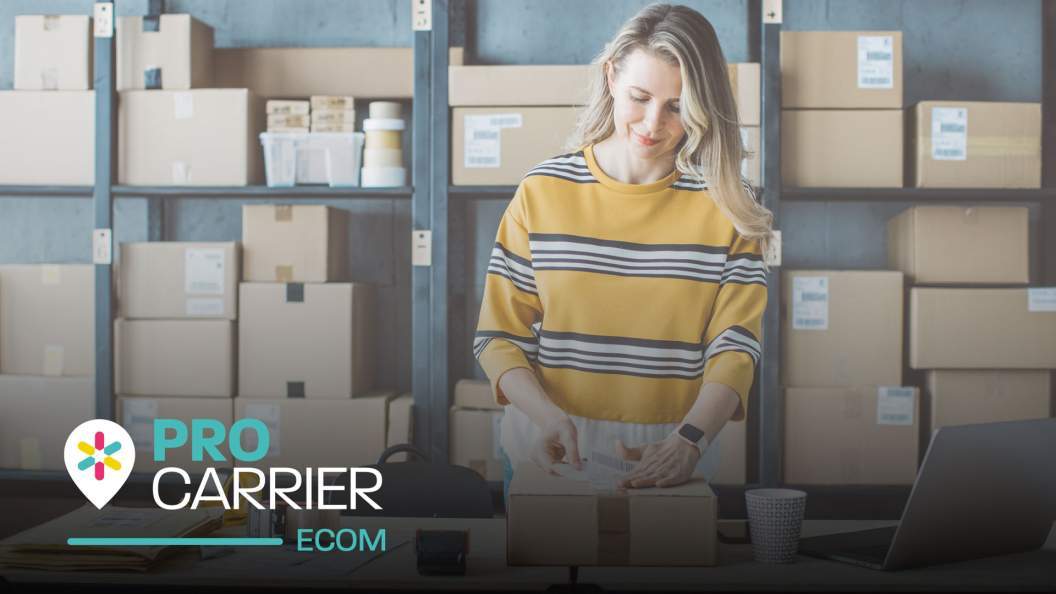No retailer in their right mind is happy when customers return items. But returns don’t have to be a complete write-off. If you see them as an opportunity to wow the customer, you could go a long way to improving customer retention. And that can be a whole lot more valuable in the long run.
If you want to delight customers with your returns strategy, then this article is here to help. We’ll explain what customers expect when it comes to returns and five core strategies you can use to improve customer retention through returns.
What Do Customers Expect From a Returns Process?
Let’s cut straight to the chase. Customers care a lot about your approach to returns, according to the data:
- 60% of shoppers will check a store's return policy before shopping there
- 47% of UK consumers will not shop anywhere that charges for returns
- 92% of consumers will shop again at stores that make returns easy
Customers also expect to receive a credit or cash refund. Most hope for a full refund, with 59% of shoppers considering full refunds a primary deciding factor when choosing whether to buy from a store.
You need to process returns quickly, while still giving customers enough time to decide whether they like the product or not.
In short, your return process should be free, quick, and simple.
How to Improve Customer Retention With Returns
While it might be a bit much for every store to offer free and fast returns, there’s nothing stopping any retailer from using the tips below to improve their returns processes and boost their customer retention rates as a result.
Improve Your Returns Policy
The first and most important step to improve your returns is to look at your current returns policy and see how you can improve it. Here are some ideas to make your returns policy more appealing and easier to understand:
- Offer direct refunds. Most customers prefer cash or credit refunds, so consider adding this to your policy if you only provide exchanges. Not every store will offer full refunds, so if you want a competitive edge, this might be something to offer.
- Make exchanges more appealing. If you want to decrease revenue loss, you can still offer exchanges. However, you’ll need to provide an incentive for exchanges since most customers are quick to decline this option. You can offer things like coupons and free shipping to make an exchange more appealing.
- Be clear on your returns window and make sure it’s generous. It is important to offer customers a return window that gives them time to make a decision and send products back. You may lose business if you only offer returns within a few weeks. Typically, most shoppers will expect a window of at least 30 days.
- Make sure your returns policy is easy to understand. Customers will appreciate a return policy that is simple and easy to understand. You need to clearly define what products they can return and what your store will accept. Make sure the customer knows if they have to pay for shipping and list all the different types of returns you offer, whether that is cash refunds, exchanges or store credit.
Provide Flexible Returns Options
The modern shopper expects flexible return options. Not only will implementing various options make returns more accessible, but they will also appeal to a broader customer base.
- Provide labels. Most stores expect customers to print labels at home. However, some customers may not have access to a printer, and others would rather avoid the hassle altogether. To increase convenience, consider providing an option to have return labels sent to the customers or use a provider that sends QR codes via email.
- Offer drop-off points. Many customers shy away from returning products as it can be a hassle to go to the post office. Consider working with a third party and setting up a location for customers to drop off unpackaged items or have them collected from customers.
- Offer in-store returns. Consider letting customers who purchase goods online return them at their nearest store. Many shoppers prefer this as it allows them to skip the time-consuming parts of returns, like visiting the post office and packing their items up properly.
While you don’t have to offer all these options, choosing a few to implement will greatly improve the overall customer experience. Your customers will appreciate having different options to choose from and it may make them more likely to shop with you again.
Localise the Returns Experience
If you send parcels across borders then it is vital that you localise the returns process. That means tailoring your returns processes to each local market in which you operate.
For example, do your customers care about the environment? Around 55% of UK shoppers stated in a survey that they try their best to prioritise sustainability. Localising your returns experience may mean providing environmentally friendly returns in one country, such as offering multiple drop-off points and reducing the return window so you can restock items.
The modern shopper will also expect your website and return process to be in their local language. Working with an international carrier can help, but you may need to make your own website multilingual, too.
Finally, it’s good practice to analyse the return policies of your competitors in each market. What are they doing differently that you can replicate?
Automate Your Processes
The process of getting an online order from your customer back to your warehouse can be long and complicated — frustrating both the customer and your staff.
Automating your returns process can cut unnecessary steps and make the process easier and more manageable for both the customer and your business, ultimately saving time and money.
You can automate the returns process by setting up a self-service portal on your website. All you have to do is input automation rules and integrations and put eligibility conditions in place. By using the portal, customers only need to complete four steps: request a return, select a return method, wait for their request to be approved, and finally, return the item and receive a refund.
Process Returns Quickly
Today’s shopper expects things to happen fast. With thousands of stores at their fingertips, prospective customers won’t think twice about choosing a store with a faster returns service than yours. For this reason, you must do everything you can to process returns quickly.
Around 52% of consumers are more likely to shop at stores offering quick returns. If a store has long processing times, customers tend to keep their items to avoid the hassle and will never buy from that store again due to the bad experience.
While processing quick returns is of the utmost importance to increase customer retention, you must communicate this with your customers. To increase customer loyalty and attract new buyers, advertise that shoppers will receive quick refunds. You don’t need to put a banner on your home page; simply place this information at the top of your return policy.
Build a Better Returns Process Today
Instead of viewing returns as setbacks, businesses can use return policies as opportunities to drive customer retention. Not only can returns satisfy the needs of the customers, but they can also enhance loyalty and drive even more sales.
There are a few ways to improve customer retention with returns, including improving your return policy, providing flexible options, localising the returns experience, automating your processes and finally, processing returns quickly.
Want to learn more about how Pro Carrier can help? Speak to an expert today.



